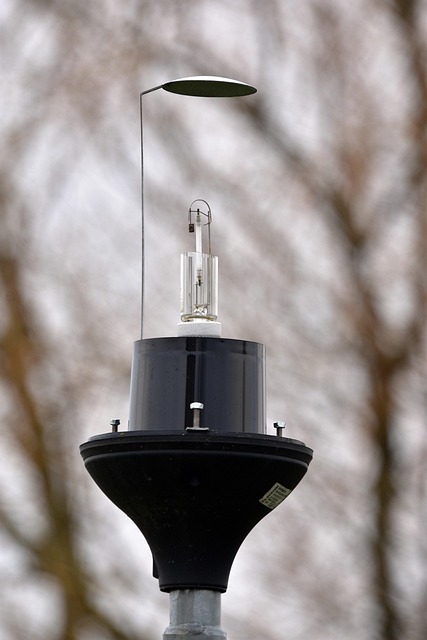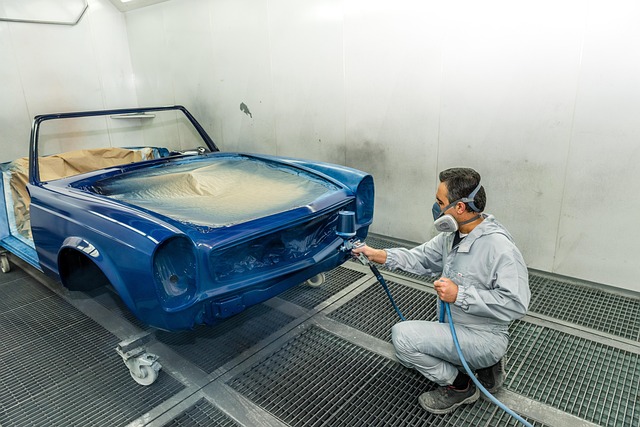Tesla's advanced battery protection systems, crucial for prolonging and optimizing high-voltage battery packs, monitor key parameters like voltage, temperature, and current to prevent issues such as overcharging, overheating, and short circuits. When repairs are needed, a meticulous evaluation process using diagnostic tools identifies faults within the Battery Management System (BMS), with skilled technicians replacing damaged parts with original equipment manufacturer (OEM) components to maintain safety standards and performance. This meticulous Tesla battery protection repair process not only restores functionality but also preserves the battery's health, ensuring longevity and preventing future problems.
Tesla vehicles are renowned for their cutting-edge technology, but even advanced systems like the battery protection mechanism can falter. This article delves into the intricacies of Tesla battery protection repair using original equipment manufacturer (OEM) components. We’ll explore common issues and causes behind battery protection failures, providing a step-by-step guide to ensure proper repairs. Understanding these processes is crucial for both professionals and enthusiasts looking to maintain their Tesla’s powerful energy systems.
- Understanding Tesla Battery Protection Systems
- Common Issues and Causes of Battery Protection Failure
- Repair Process Using OEM Components: A Step-by-Step Guide
Understanding Tesla Battery Protection Systems

Tesla battery protection systems are designed to safeguard the vehicle’s high-voltage battery pack from potential damage caused by various factors, ensuring optimal performance and longevity. These systems employ sophisticated sensors and controls to monitor critical parameters such as voltage, temperature, and current levels, preventing overcharging, overheating, or short circuits. By integrating these safety measures, Tesla vehicles offer enhanced peace of mind for owners, eliminating common vehicle repair concerns associated with battery degradation.
Understanding the intricate workings of these systems is paramount when considering Tesla battery protection repair. The process involves meticulous evaluation, utilizing advanced diagnostic tools to pinpoint any faults or anomalies within the battery management system (BMS). Once identified, repairs can be performed using original equipment manufacturer (OEM) components, guaranteeing not only effective fixing but also maintaining the vehicle’s safety standards and performance capabilities, thus enhancing car repair services overall.
Common Issues and Causes of Battery Protection Failure

Battery protection systems in Tesla vehicles are designed to safeguard against various issues, yet they’re not immune to failure. Common problems include overcharging, extreme temperature fluctuations, and short circuits—all of which can lead to damage or degradation of the battery pack. Overcharging occurs when the vehicle is left plugged in for extended periods, causing excessive strain on the battery. Extreme temperatures, whether hot or cold, can affect the battery’s performance and longevity. Short circuits, often caused by internal damage or external factors like road debris, can result in significant battery harm.
In an automotive body shop or auto collision repair facility, skilled technicians use OEM (original equipment manufacturer) components to address these issues during Tesla battery protection repair. Using high-quality parts ensures the replacement parts are up to par with the vehicle’s original specifications. Proper repairs not only restore functionality but also help maintain the overall health and performance of the battery pack for years to come, preventing more serious issues down the line.
Repair Process Using OEM Components: A Step-by-Step Guide

Tesla battery protection repair using OEM (Original Equipment Manufacturer) components involves a meticulous process designed to ensure optimal performance and safety. It’s crucial for maintaining the vehicle’s overall health, especially after a collision or other damage. Here’s a step-by-step guide:
1. Assessment and Disassembly: Begin by thoroughly inspecting the battery protection system. If it’s been damaged in a vehicle collision repair or auto body shop work, carefully disassemble the affected components to access the battery. This might include removing surrounding panels or brackets to gain clear access.
2. Identification and Replacement: Identify each part of the battery protection system, focusing on any worn out or damaged items. Replace these parts with genuine OEM components designed specifically for your Tesla model. Using original equipment ensures compatibility and longevity, just like in a Mercedes Benz repair process that prioritizes precision and quality. Each component, from conductors to insulators, should be meticulously replaced to restore the protection system’s integrity.
Tesla battery protection repair using original equipment manufacturer (OEM) components is a reliable solution for addressing issues within the vehicle’s electrical system. By understanding the common causes of battery protection failure, you can proactively maintain your Tesla’s performance and longevity. Following the step-by-step guide ensures a meticulous repair process, utilizing high-quality OEM parts to restore functionality and peace of mind on the road. This approach combines technical expertise with genuine components, making it an effective strategy for any Tesla owner seeking to resolve battery protection problems.














